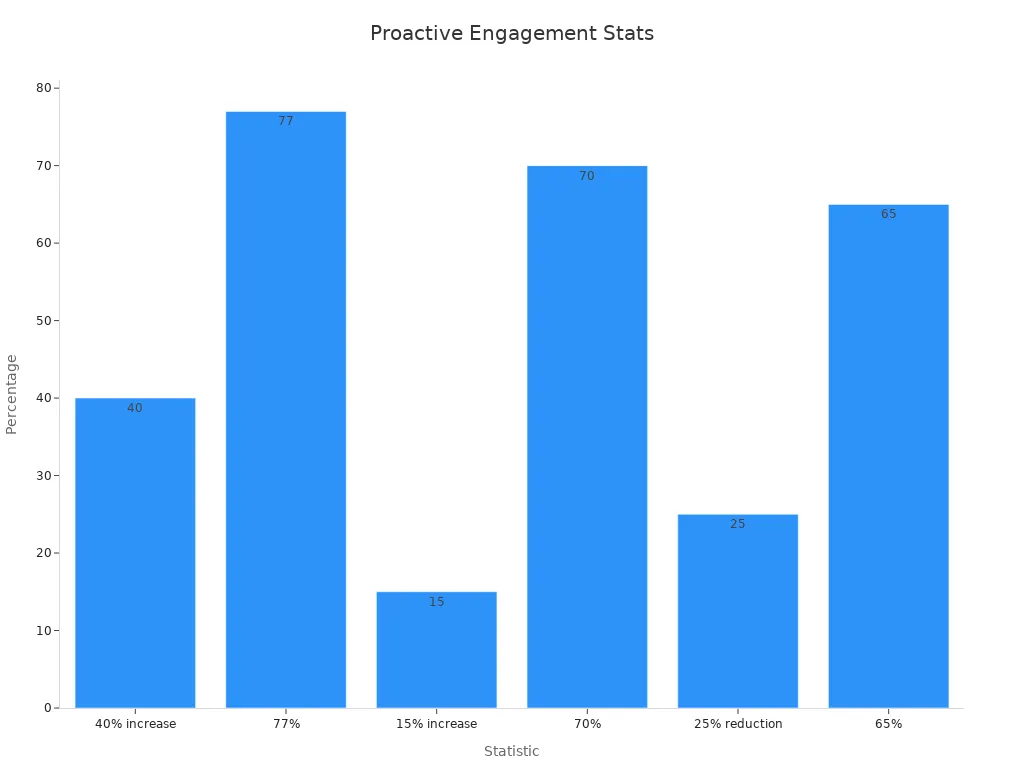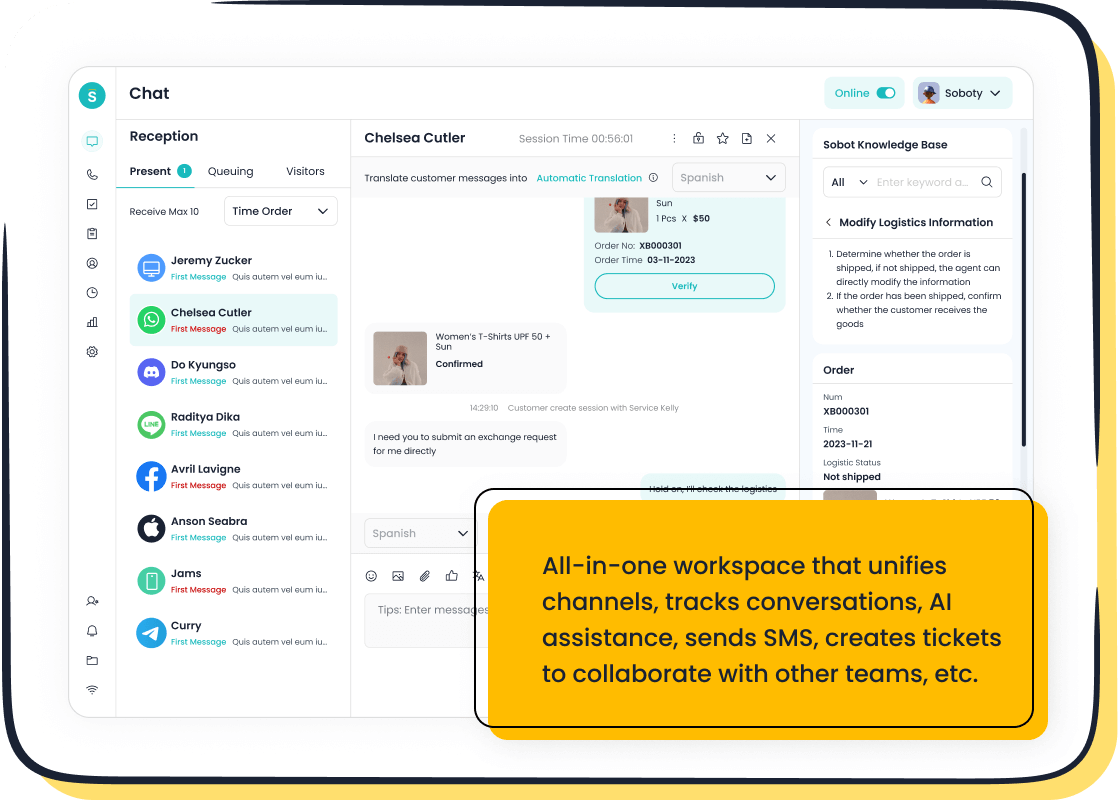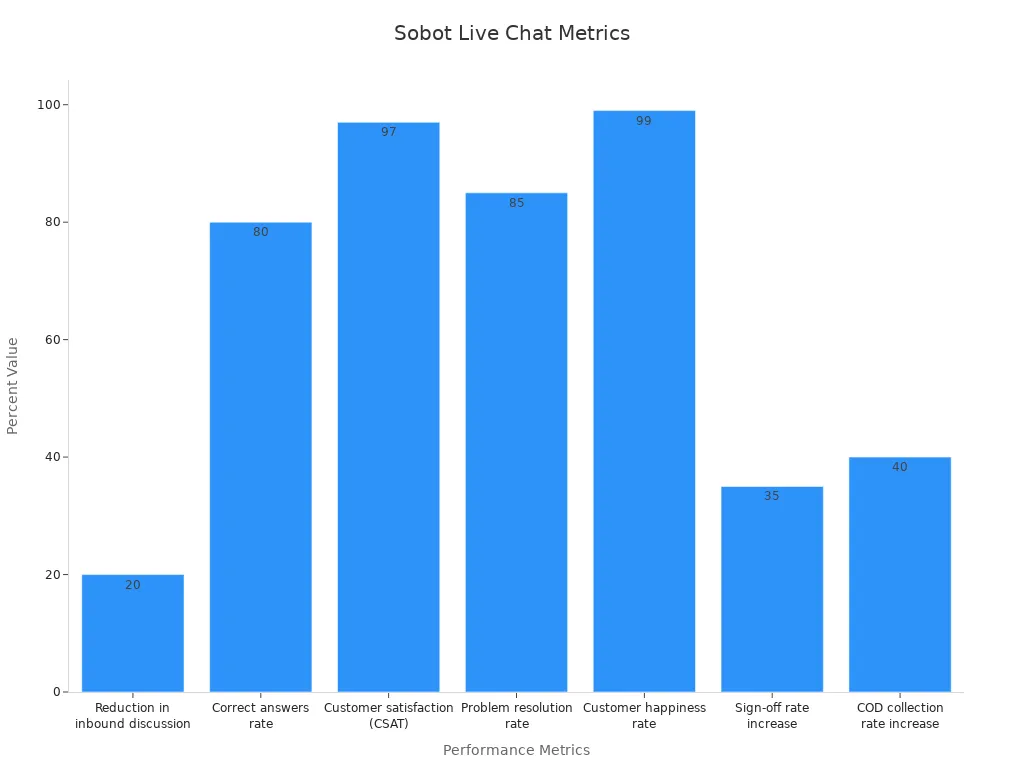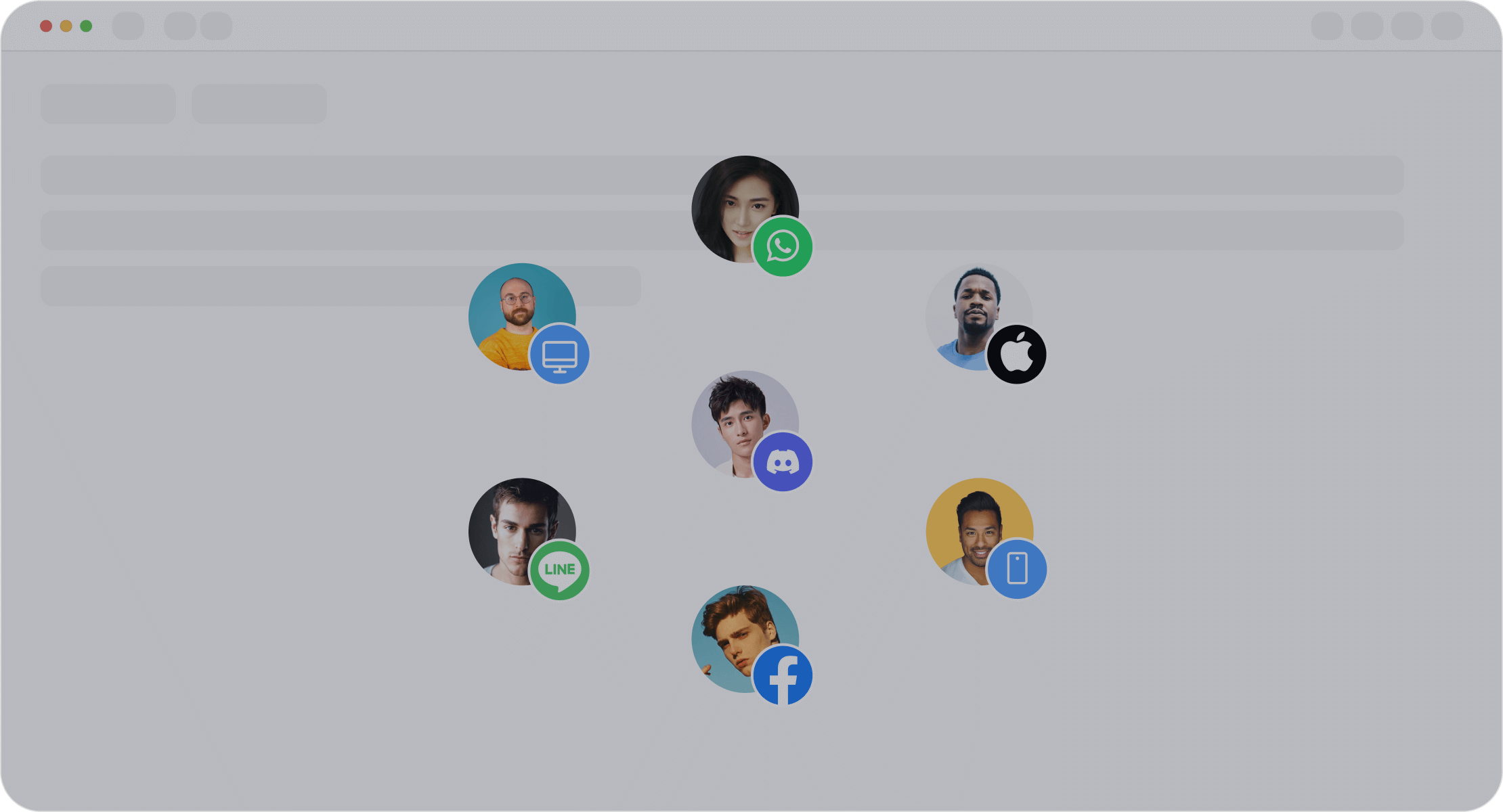How to Master Proactive Customer Engagement

Proactive customer engagement means reaching out to customers before they ask for help. It’s about anticipating their needs and creating better customer experiences. In 2025, this approach will become even more critical as businesses face rising expectations. The customer engagement solutions market is projected to grow to $23.52 billion, driven by the need for smarter retention strategies and real-time feedback. By adopting proactive strategies, you can reduce customer churn and build stronger customer relationships.
Sobot, a leader in customer engagement solutions, empowers businesses like Samsung to deliver seamless service across channels. With tools like Sobot Live Chat, you can unify communication, leverage predictive analytics, and enhance customer satisfaction.
What Is Proactive Customer Engagement?
Definition and Key Characteristics
Proactive customer engagement involves reaching out to customers before they encounter issues or express their needs. Unlike traditional approaches, this strategy focuses on anticipating what customers might require during their journey. It emphasizes creating meaningful interactions that enhance the overall experience.
Key characteristics of proactive engagement include:
- Anticipation: Predicting customer needs based on data and trends.
- Personalization: Tailoring communication to individual preferences.
- Timeliness: Reaching out at the right moment to provide value.
- Consistency: Ensuring seamless interactions across all touchpoints.
Businesses adopting proactive strategies often see measurable benefits. For instance, companies that act on customer feedback experience a 15% increase in retention, while those focusing on feedback reduce churn by 25%.
| Statistic | Description |
|---|---|
| 40% increase | Businesses using personalized communication see a 40% rise in engagement. |
| 77% | Customers view brands more favorably when feedback is proactively sought. |
| 70% | Customers show greater loyalty to companies that listen to their feedback. |

How It Differs from Reactive Engagement
Proactive engagement stands apart from reactive strategies by focusing on prevention rather than response. Reactive engagement occurs when you wait for customers to reach out with questions or complaints. In contrast, proactive engagement involves taking the initiative to address potential concerns before they arise.
For example:
- Reactive: A customer contacts support to report a delayed delivery.
- Proactive: You notify the customer in advance about the delay and offer a solution.
This shift in approach leads to better outcomes. Proactive strategies result in a 20% increase in participation in wellness programs and higher satisfaction rates in industries like healthcare. By addressing issues early, you can build trust and strengthen relationships throughout the customer journey.
The Role of Anticipating Customer Needs
Anticipating customer needs is the cornerstone of proactive engagement. By understanding what customers might require at different stages of their journey, you can deliver solutions that feel timely and relevant. Predictive analytics plays a vital role in this process, offering insights that guide your actions.
Anticipation benefits businesses in several ways:
- Improved Decision-Making Processes: Predictive models reduce uncertainty, helping you allocate resources effectively.
- Enhanced Customer Experiences: Personalized interactions based on predictions increase satisfaction and loyalty.
- Increased Operational Efficiency: Streamlined operations and optimized supply chains save time and costs.
For instance, predictive analytics can help you identify when a customer might abandon their cart. By sending a timely reminder or offering a discount, you can turn potential losses into conversions. This approach not only improves the customer journey but also boosts your bottom line.
Why Proactive Customer Engagement Matters in 2025
Enhancing the Customer Experience with Proactive Outreach
Proactive customer engagement transforms how you interact with your customers. By reaching out before issues arise, you create smoother customer journeys and reduce frustration. For example, sending reminders for bill payments or subscription renewals can prevent late fees and improve customer satisfaction. In retail, proactive communication after a purchase—such as updates on delivery or renewal reminders—enhances the overall experience.
Priscilla Ng, a leader in customer strategy, highlights that understanding customer behavior through data analysis is essential for proactive support. This approach allows you to anticipate needs and deliver timely solutions. Businesses that adopt proactive outreach often see higher retention rates and stronger customer loyalty.
| Industry | Outcome | Key Strategy |
|---|---|---|
| Retail | Enhanced digital experiences and faster implementations | Proactive communication post-purchase, managing recalls, and handling renewals |
| Financial Services | Reduced late payments and improved customer relationships | Proactive reminders for bill payments and subscription renewals |
Building Loyalty Through Anticipation and Personalization
Anticipating customer needs builds trust and strengthens loyalty. Customers value brands that understand their preferences and provide personalized experiences. For instance, predictive analytics can identify when a customer might abandon their cart. Sending a timely discount or reminder can turn a potential loss into a sale, improving both the customer journey and your revenue.
Research shows that 73.6% of customers are more likely to become repeat buyers when they feel connected to a brand’s online community. Personalization plays a key role here. Tailored communication not only enhances the experience but also fosters long-term relationships. Engaging customers through proactive outreach ensures they feel valued, which directly impacts loyalty.
The Competitive Advantage of Proactive Strategies
Proactive engagement gives you a significant edge over competitors. Traditional methods often rely on reactive responses, which can be slow and inconsistent. In contrast, AI-driven proactive strategies enable faster decision-making and uncover hidden patterns in customer behavior.
| Aspect | Traditional Methods | AI-Driven Methods |
|---|---|---|
| Speed | Slower, potential for inconsistency | Fast, precise, processes large datasets quickly |
| Scalability | Limited adaptability to new data sources | Highly scalable, adapts in real-time |
| Insights | May provide limited depth and scope | Uncovers hidden patterns, actionable insights |
Broad River Retail implemented proactive strategies and reduced customer resolution time by 80%. This improvement not only enhanced customer satisfaction but also reduced returns. By adopting proactive customer engagement, you can streamline operations, improve retention, and stay ahead in a competitive market.
Actionable Strategies to Master Proactive Customer Engagement

Leveraging Data and Analytics for Predictive Insights
Data and analytics form the backbone of proactive customer engagement. By analyzing customer behavior, you can predict their needs and take action before issues arise. Predictive analytics, in particular, offers powerful tools to enhance your customer journey.
- Early Churn Detection and Prevention: Identify customers at risk of leaving by tracking engagement levels and product usage.
- Personalized Customer Engagement: Segment customers based on their preferences and usage patterns to deliver tailored experiences.
- Maximizing Customer Lifetime Value: Recognize high-value customers and offer strategic incentives to boost loyalty.
For example, predictive models can help you detect when a customer might abandon their cart. Sending a timely reminder or discount can turn potential losses into conversions. This approach not only improves the customer experience but also strengthens your bottom line.
Sobot’s AI-powered customer support solutions integrate predictive analytics to help businesses anticipate customer needs. By leveraging these insights, you can create a seamless and proactive customer journey that builds trust and loyalty.

Using Sobot Live Chat for Omnichannel Proactive Outreach
Sobot Live Chat revolutionizes how you engage with customers by offering omnichannel support. It allows you to connect with customers across platforms like websites, apps, and social media, ensuring no interaction is missed. This tool empowers you to deliver proactive outreach that enhances the customer experience.
| Metric | Value |
|---|---|
| Reduction in inbound discussion | 20% |
| Positive feedback rate | 96%+ |
| Correct answers rate | 80% |
| Customer satisfaction (CSAT) | 97% |
| Problem resolution rate | 85% |
| Customer happiness rate | 99% |
| Sign-off rate increase | 35% |
| COD collection rate increase | 40% |

With features like AI-assisted tools, built-in analytics, and real-time communication, Sobot Live Chat ensures timely and personalized communication. For instance, it can send proactive reminders about order updates or payment deadlines, reducing customer frustration. Businesses using Sobot Live Chat report a 97% customer satisfaction rate, showcasing its effectiveness in proactive customer service.
Personalizing Customer Interactions Across Channels
Personalization is key to creating meaningful customer experiences. By tailoring interactions to individual preferences, you can foster stronger connections and improve engagement. Omnichannel strategies play a crucial role here, enabling you to maintain consistency across platforms.
Brands like Slazenger and Vogacloset have demonstrated the power of personalized communication. Slazenger recovered 40% of revenue by sending contextual messages to cart abandoners, achieving a 3x ROI in just eight weeks. Similarly, Vogacloset launched personalized campaigns on WhatsApp, resulting in a 30x ROI and enhanced product discovery.
| Brand | Description | Key Features |
|---|---|---|
| Sweetgreen | A fast restaurant chain that creates an omnichannel experience through its website, app, and in-store ordering. | Order ahead, customization, rewards, nutritional info, favorite orders. |
| Home Depot | Integrates website, app, and physical stores for a consistent customer experience. | Product scanning, augmented reality, live chat, in-store service. |
| Bonobos | An upscale e-commerce-driven apparel company with a unique shopping experience through various channels. | Guideshops for trying clothes, online and app integration. |
Sobot Live Chat supports personalization by unifying customer data across channels. Its AI-powered tools analyze customer behavior, enabling you to deliver tailored messages and offers. This approach not only enhances the customer journey but also drives long-term loyalty.
Training Teams for Proactive Customer Success
Your team plays a pivotal role in delivering proactive customer service. To master this, you need to invest in training programs that equip your staff with the skills and mindset required for proactive engagement. Well-trained teams can anticipate customer needs, resolve issues faster, and create a seamless customer journey.
Here are some effective training strategies:
- Leadership Development: Programs focused on customer success leadership help team members transition into strategic roles. These programs teach skills like managing customer health scores and identifying opportunities for growth.
- Cross-Functional Collaboration: Workshops that bring together sales, marketing, and support teams improve alignment. This ensures everyone works toward the same customer success goals.
- Business Impact Training: Teach your team how their daily actions influence revenue. For example, understanding customer lifetime value helps them prioritize high-impact tasks.
Training also improves measurable outcomes. Companies that invest in professional development see higher customer retention rates and improved Net Promoter Scores (NPS). For instance, a well-trained team can identify early signs of churn and take proactive steps to retain customers. This not only boosts satisfaction but also strengthens loyalty.
Sobot’s AI-powered tools, like Live Chat, can complement your training efforts. These tools provide real-time insights and predictive analytics, enabling your team to act proactively. By combining technology with training, you can create a customer journey that feels personalized and efficient.
Tip: Regularly update your training programs to reflect changing customer expectations and industry trends. This keeps your team ahead of the curve.
Collecting and Acting on Customer Feedback
Customer feedback is a goldmine for improving proactive customer engagement. Listening to your customers helps you identify pain points, refine your strategies, and enhance the customer journey. However, collecting feedback is only half the battle—you must act on it to see real results.
Why is feedback so critical? Studies show that 69% of consumers abandon businesses after negative experiences. On the flip side, 87% of customers expect brands to proactively address service-related issues. Acting on feedback demonstrates that you value their opinions, which builds trust and loyalty.
Here’s how you can make the most of feedback:
- Use Multiple Channels: Collect feedback through surveys, social media, and live chat tools like Sobot Live Chat. This ensures you capture diverse perspectives.
- Analyze Trends: Look for recurring themes in complaints or suggestions. For example, if customers frequently mention delayed responses, you can optimize your support processes.
- Close the Loop: Inform customers about the changes you’ve made based on their feedback. This shows that their input drives meaningful improvements.
Sobot’s built-in analytics can help you track customer satisfaction metrics like NPS and Customer Health Scores (CHS). These insights allow you to measure the impact of your actions and refine your approach. For instance, if your NPS improves after implementing a new feature, you know you’re on the right track.
Note: Acting on feedback doesn’t just improve customer satisfaction—it also enhances operational efficiency. By addressing common issues, you reduce repetitive inquiries and free up resources for more complex tasks.
Future Trends in Proactive Customer Engagement

Hyper-Personalization and Predictive Care
Hyper-personalization is reshaping how you interact with customers. It uses real-time data, artificial intelligence, and predictive analytics to create tailored experiences. Unlike traditional personalization, this approach goes beyond basic demographics. It considers browsing behavior, purchase history, and even social media activity to deliver a seamless customer journey. For example, predictive analytics can anticipate when a customer might need a product refill and send a timely reminder.
This trend allows you to move from reactive to proactive customer engagement. By anticipating needs, you can offer solutions before customers even ask. Businesses adopting hyper-personalization see higher engagement and loyalty. However, balancing tailored content with privacy is essential. Predictive analytics can help you make personalized recommendations while respecting customer trust.
The Role of AI and Automation in 2025
AI is revolutionizing proactive customer engagement. It enables you to monitor potential problems, offer anticipatory solutions, and streamline operations. For instance, companies like Tesla use predictive analytics to send maintenance alerts before issues arise. Similarly, AI-driven chatbots handle routine queries, freeing your team to focus on complex tasks. This improves both efficiency and the customer experience.
Automation tools also reduce employee workload. A chatbot can manage up to 80% of repetitive inquiries, allowing agents to concentrate on strategic thinking. Generative AI, as demonstrated by Zingly, collaborates with humans in real time to enhance customer interactions. These advancements make AI indispensable for delivering proactive and efficient service.
Omnichannel Strategies for Seamless Customer Experiences
Omnichannel strategies unify customer interactions across platforms, ensuring a consistent experience. By integrating advanced technologies like AI and big data analytics, you can collect and analyze customer data from diverse sources. This enables personalized interactions that enhance satisfaction and loyalty.
For example, Target uses omnichannel strategies to tailor customer journeys in its loyalty program. This approach simplifies engagement and improves ease of use. A systematic review of omnichannel marketing highlights its ability to provide seamless experiences at all touchpoints. By adopting these strategies, you can ensure customers feel valued, no matter where they interact with your brand.
Tip: Use tools like Sobot Live Chat to unify communication channels and deliver consistent, proactive support.
Ethical Considerations in Proactive Engagement
Proactive customer engagement offers immense benefits, but it also comes with ethical responsibilities. As you anticipate customer needs and personalize interactions, you must ensure your strategies respect privacy, transparency, and fairness. Ignoring these principles can harm trust and damage your brand reputation.
One of the most critical aspects of ethical engagement is protecting customer data. When you collect and analyze data to predict customer behavior, you must handle it responsibly. Customers expect their information to remain secure and used only for its intended purpose. Violating this trust can lead to legal consequences and loss of loyalty.
Transparency plays a key role in building trust. You should clearly communicate how you use customer data and why. For example, if you send personalized recommendations, explain how you arrived at those suggestions. This openness reassures customers and strengthens their confidence in your brand.
Tip: Always provide customers with the option to opt out of data collection or personalized services. Empowering them with control over their information demonstrates respect for their autonomy.
Ethical considerations also extend to fairness in engagement. Avoid using predictive analytics to exploit vulnerabilities or manipulate decisions. Instead, focus on creating value for your customers. For instance, use insights to offer helpful solutions rather than pressuring them into unnecessary purchases.
Here are some key findings on the impact of ethical practices in proactive engagement:
- Ethical choices in product development enhance user trust and engagement.
- Transparency and privacy protection improve customer experiences.
- Companies that prioritize ethics strengthen their societal impact and brand loyalty.
By integrating ethical principles into your proactive strategies, you can foster trust, loyalty, and long-term success. Ethical engagement not only benefits your customers but also positions your brand as a responsible leader in the industry.
Overcoming Challenges in Proactive Customer Engagement
Balancing Automation with the Human Touch
Automation streamlines customer service by handling routine tasks efficiently. AI-powered systems can answer common questions, collect data, and provide quick solutions. However, customers often prefer human interaction for complex or sensitive issues. Combining automation with human empathy ensures a balanced approach that enhances satisfaction.
For example:
- Use AI to manage repetitive inquiries, freeing agents to focus on more challenging problems.
- Transition to human agents when emotional cues or rapport-building are needed.
This strategy improves efficiency while maintaining a personal connection. Many companies report success by integrating AI for initial engagement and relying on human agents for deeper interactions. Customers feel valued when their concerns are addressed thoughtfully, which builds trust and loyalty.
Tip: Train your team to interpret emotional cues and handle escalations effectively. This ensures seamless collaboration between automated systems and human agents.
Ensuring Data Privacy and Security
Privacy concerns can hinder proactive engagement. Customers expect their data to remain secure and used responsibly. To meet these expectations, you must embed privacy into every process and comply with regulations like GDPR, CCPA, and VCDPA. These laws mandate transparency and protect consumer rights.
| Regulation | Description | Implications |
|---|---|---|
| GDPR | General Data Protection Regulation in the EU | Requires adherence to guidelines for data collection and processing, with penalties for non-compliance. |
| VCDPA | Virginia Consumer Data Protection Act | Mandates specific data handling practices to protect consumer privacy. |
| CCPA | California Consumer Privacy Act | Enforces consumer rights regarding personal data and requires transparency in data usage. |
To build trust, follow these steps:
- Collect only the data you need.
- Secure information with encryption and backups.
- Be transparent about how you use customer data.
- Obtain consent before sharing or processing information.
Studies show that 87% of consumers avoid companies with questionable security practices. Highlighting your privacy credentials reassures customers and strengthens their confidence in your brand.
Addressing Resistance to Change in Teams
Implementing proactive strategies often requires a cultural shift within your organization. Teams may resist change due to unfamiliarity with new tools or fear of increased workloads. Overcoming this challenge involves clear communication and effective training.
Start by explaining the benefits of proactive engagement. Show how it reduces repetitive tasks and improves customer satisfaction. Provide hands-on training to familiarize your team with tools like Sobot Live Chat. Workshops that focus on collaboration between departments can also improve alignment and reduce resistance.
| Challenge | Statistic |
|---|---|
| Personalization | Almost two-thirds of customers expect companies to personalize and adapt to their needs. |
| Customer Interaction | 77% of customers expect immediate interaction when contacting a company. |
| Customer Treatment | 61% of customers feel that companies treat them as just a number. |
When your team understands the impact of their actions, they become more motivated to embrace change. Empower them with the skills and knowledge to anticipate customer needs and deliver proactive solutions. This approach not only improves internal processes but also enhances the overall customer experience.
Proactive customer engagement will define success in 2025. By anticipating needs and personalizing interactions, you can create seamless experiences that foster loyalty. Strategies like leveraging data, predictive analytics, and omnichannel tools ensure you stay ahead of customer expectations. Personalization, especially in post-sales phases, strengthens connections and builds trust. Using AI-driven insights, you can identify at-risk customers and uncover upselling opportunities, enhancing retention and satisfaction.
Sobot’s Live Chat empowers you to unify communication and deliver proactive support across channels. Its AI-powered tools and analytics help you tailor experiences that meet evolving customer needs. By adopting these solutions, you can transform your customer journey and achieve long-term growth.
FAQ
What is proactive customer engagement, and why is it important?
Proactive customer engagement means anticipating customer needs and addressing them before they ask. It improves satisfaction, reduces churn, and builds loyalty. For example, sending reminders for bill payments or updates on orders creates smoother experiences. Businesses adopting this strategy often see higher retention rates.
How does Sobot Live Chat support proactive customer engagement?
Sobot Live Chat enables omnichannel communication, ensuring you never miss an interaction. Its AI-powered tools analyze customer behavior to send timely updates, reminders, or offers. Businesses using Sobot Live Chat report a 97% customer satisfaction rate, showcasing its effectiveness in proactive outreach.
Can predictive analytics improve proactive customer engagement?
Yes, predictive analytics helps you anticipate customer needs by analyzing data trends. For instance, it can detect when a customer might abandon their cart. Sending a timely discount or reminder can turn potential losses into conversions, boosting both satisfaction and revenue.
How can businesses personalize proactive customer interactions?
Personalization involves tailoring communication to individual preferences. Tools like Sobot Live Chat unify customer data across channels, enabling you to deliver customized messages. For example, sending a discount based on past purchases strengthens loyalty and enhances the customer journey.
What are the ethical considerations in proactive customer engagement?
Ethical engagement requires respecting privacy, transparency, and fairness. Always secure customer data and explain how you use it. For example, offer opt-out options for personalized services. Ethical practices build trust and position your brand as responsible and customer-focused.
See Also
Excelling in Live Chat for Effective Customer Assistance
Perfecting Live Chat Strategies Within Retail Environments
Tips for Efficiently Overseeing Live Chat Support Teams
A Comprehensive Guide to Establishing Omnichannel Support Systems
